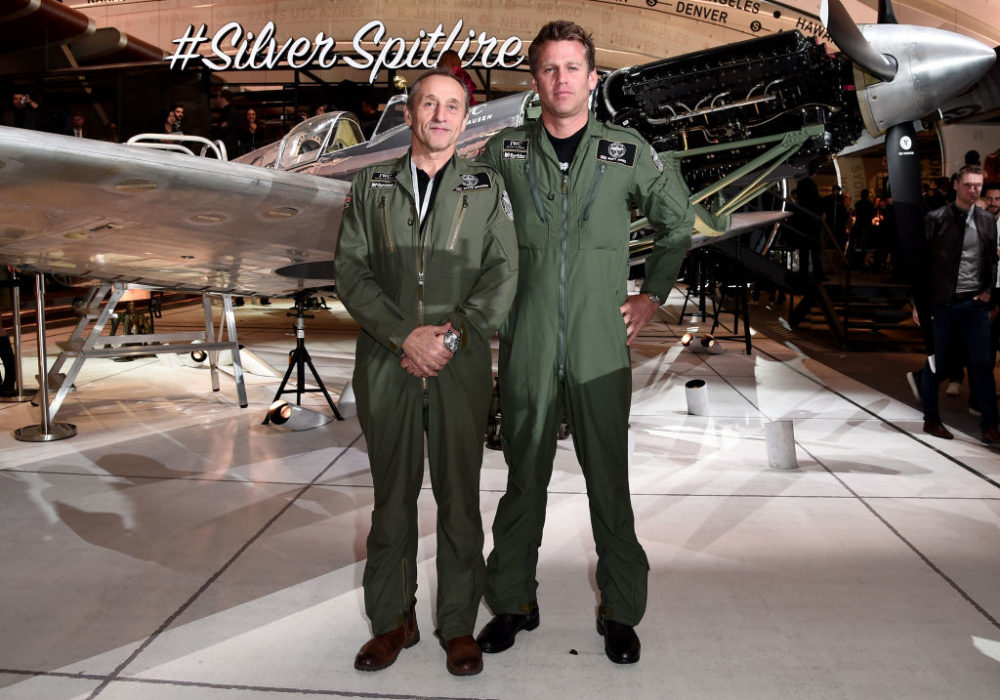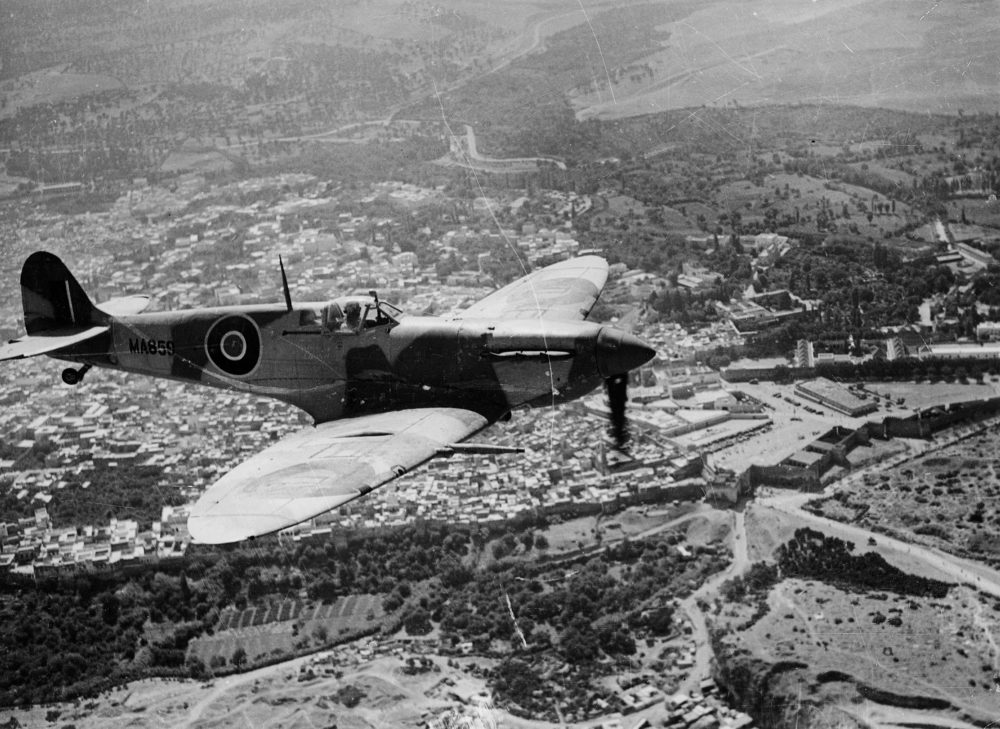Advertisement
'The Most Beautiful Machine To Fly': Iconic Spitfire Takes Flight Once Again
Resume
The Spitfire, an iconic British single-seat fighter aircraft used by the Royal Air Force in World War II, is taking to the skies once again, marking 75 years since the D-Day invasions. But this time, the legendary warplane isn’t outfitted with guns, camouflage and squadron markings.
The Spitfire Mk IX, known simply as the “Silver Spitfire,” is set to become the first of its type to fly around the world.
Starting August 5, aviators Steve Brooks and Matt Jones will be taking the 76-year-old Spitfire to new heights, traveling 27,000 miles around the world in a 4-month expedition. Brooks and Jones plan to make more than 150 stops in nearly 30 countries, including South Korea, Pakistan, Egypt and Russia.
“It's the most beautiful machine to fly,” Steve Brooks says. “You sort of wear it like a jacket rather than sit in it. Where you look, you go — and it's as if gravity itself falls away.”
Flying the aluminum machine — which has the largest petrol engine ever built, Brooks says — is going to be a challenge, even for these seasoned aviators. Brooks says things move “very quickly” in the cockpit, meaning the pilots need to be on their game.
“You just gotta be five steps ahead of it all at the time,” he says.
For Brooks, he says he’s excited for Americans to hear the Spitfire’s unmistakable roar when they fly across the States.
“What's going to be fun is bringing that to America and showing it to the Americans, who really understand aviation in your country,” he says. “You've got a great understanding of it and so sharing that with America is gonna be fantastic.”

Interview Highlights
On the Spitfire’s legacy
“The Spitfire is one of the most iconic, I think, machines that man ever made, really because it stands for freedom. Flight in itself, ever since the Wright brothers took off in the States to the sky, people up to that point had said that man will never fly and they proved that wrong. And so flight has been one of the greatest freedoms of mankind. But the Spitfire was a plane that was built not as an aggressor but as a defender — to defend freedom. And at that job it did. It didn't just do it in the U.K., but it did it across the globe. So I think when you say Spitfire, it conjures up that sense of overcoming the unovercomable — fighting tyranny and winning.”
On when the Nazis tried to destroy the Royal Air Force’s Spitfires
“Well what happened is they came up against the Spitfire which was designed by a man called R.J. Mitchell, who went to Germany when he was not very well. He had cancer. And he was recovering from cancer when he took his son to an air show and he saw these planes flying — this about 1935 — and he said, ‘Oh my God, there's a new technology here and this is aggressive and if we don't do something about it, we're going to have no defense for it at all.’ He came home and he was told by his doctors to rest. And he said, ‘I can't rest I have a job to do.’ And he worked tirelessly for a couple of years, built the Spitfire, and died six months later. So he never saw the war but he knew that he was building something for the freedom of mankind. And that's what he left us.”
On the Spitfires going after the Luftwaffe
“They were fighting for their freedom, so it was just wave after wave and [they had] that determination to be free. I think that's what the Spitfire stands for. What we're looking forward to do is going round the world and showing people, letting them hear that Merlin engine for themselves, letting the Spitfire fly around the world again so people can see the glory of it. But we've taken away the guns, we've taken away the camouflage, so you can see the beauty of this machine and the precision engineering of it.”
On the Silver Spitfire, the aircraft they are flying around the world
“This Spitfire is from 1943 and it flew 51 times in in the war and 51 missions and then shortly after the war went to a museum. And so when we rolled it out three years ago, it was all there but it had to be completely rebuilt. So we stripped 80,000 rivets out of it.
“Imagine that! 80,000 rivets all put together by the girls up at Birmingham who built these Spitfires and we had to drill every one of them out, and then with the help of IWC, which is the International Watch Company, they're obsessed by precision as are we, and we've gone through every little panel and piece of the plane and put it all back together. So the plane that'll be flying over America will be that totally original machine.”
On the look and feel of the Silver Spitfire
“This one is a Silver Spitfire. They were made of aluminium; we've polished the aluminium. It is the most iconic shape ever made. So to see it in the sky, you're going to look up in the sky gonna hear a roar like nothing else. Are you going to look up and you're going to see a shape of an elliptical wing, which was the most efficient wing ever designed. It's just special. It's just different.”
On the challenge of flying around the world
“It’s going to be 27,000 miles to get round the world with 30 odd countries, but probably about 100 flights for us because we haven't got a huge range. And so it's going to be day in, day out, keeping the machine going. We'll have an engineer with us, so making sure that the machine’s in good condition.”
Alex Ashlock produced this story and edited it for broadcast with Kathleen McKenna. Serena McMahon adapted it for the web.
This segment aired on August 1, 2019.
